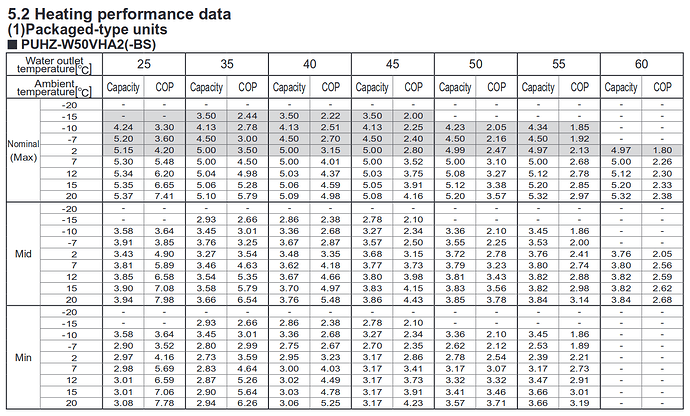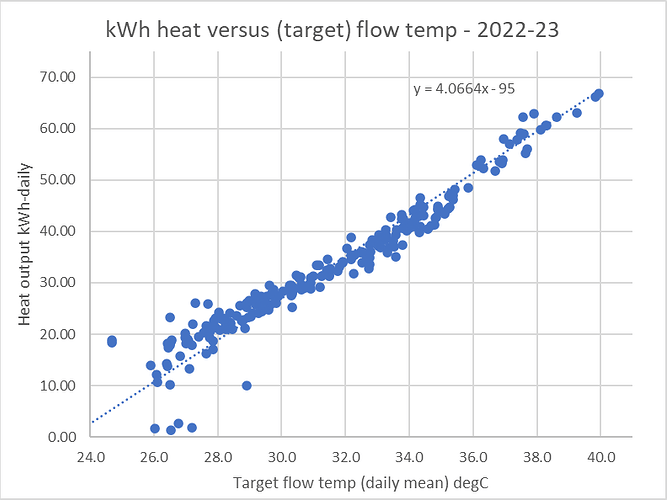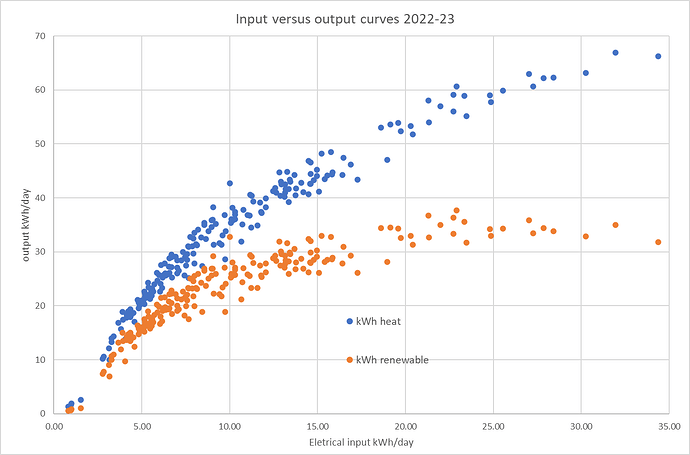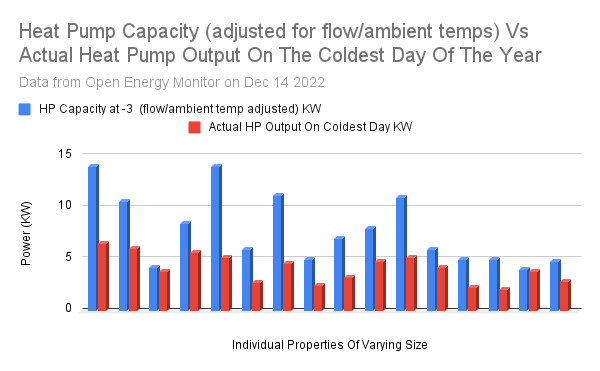Obviously my thoughts on the subject of heating our house with a heat pump are all theoretical at the moment.
Our house had three heating zones when we bought it. I never operated it like that though, I just set them all to the same temperature. Our gas boiler wasn’t massively over sized so it all worked really well.
I noticed that when I walked into the house on a cold day, even into the conservatory, that I could really feel the heat from the radiators even though they were barely warm.
That is why I am quite confident that our house will work at the low flow temperatures as the radiators are all the right size.
We only had to change two, one in the hallway that was an original from the 1980’s and one in a bathroom that they didn’t know the heat output from, a designer radiator. It had to be changed in order to get the BUS grant.
Achieving high COP values is great but it is not the whole story. We need to remember that the ASHP is just a source of hot water for us and the aim is to be as comfortable as we want to be at the lowest cost possible. Chasing COP but spending more overall on electricity is not the correct answer.
We and our homes are all different.
I think the key to achieving the highest efficiency (COP) and the lowest overall costs is in the correct sizing of the radiators in relation to the calculated heat loss of each room.
We want the heat downstairs where we live and not so much upstairs when we are sleeping so our radiators are sized appropriately. Our downstairs radiators are pretty large, those in the bedrooms no so much. In our heat loss survey all our radiators upstairs were bang on the correct size, not too big and not too small. The ones downstairs are slightly bigger than required.
Time will tell, but I think this will allow us to run on pure weather compensation with the trv’s wide open and achieve a balanced heat around the house with a high COP and similar monetary costs to our gas system.
I think problems come and comprises become necessary when you have some rooms too hot and some too cold. I just want the water to come from the heat pump, go around the radiators and go back to the heat pump. Valves opening and closing, changes in heat demand all seem to lead to inefficiencies from what I read and make it more difficult to achieve the primary aim…
I would always choose a heat pump that was slightly too large rather than the other way around as I would choose being warm over having slightly more money.







